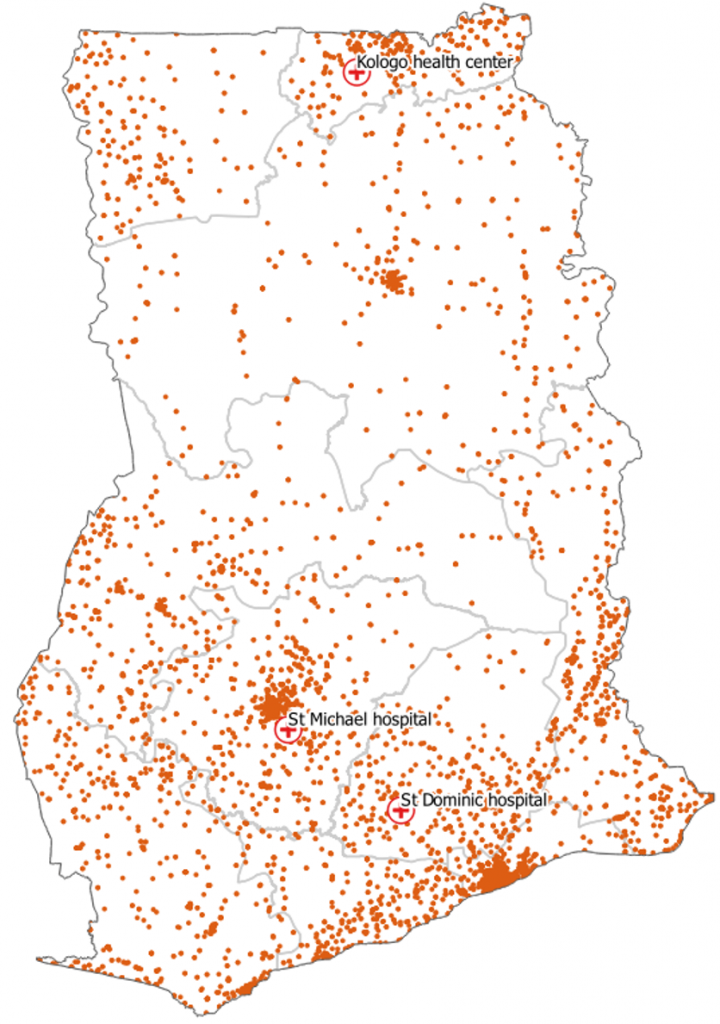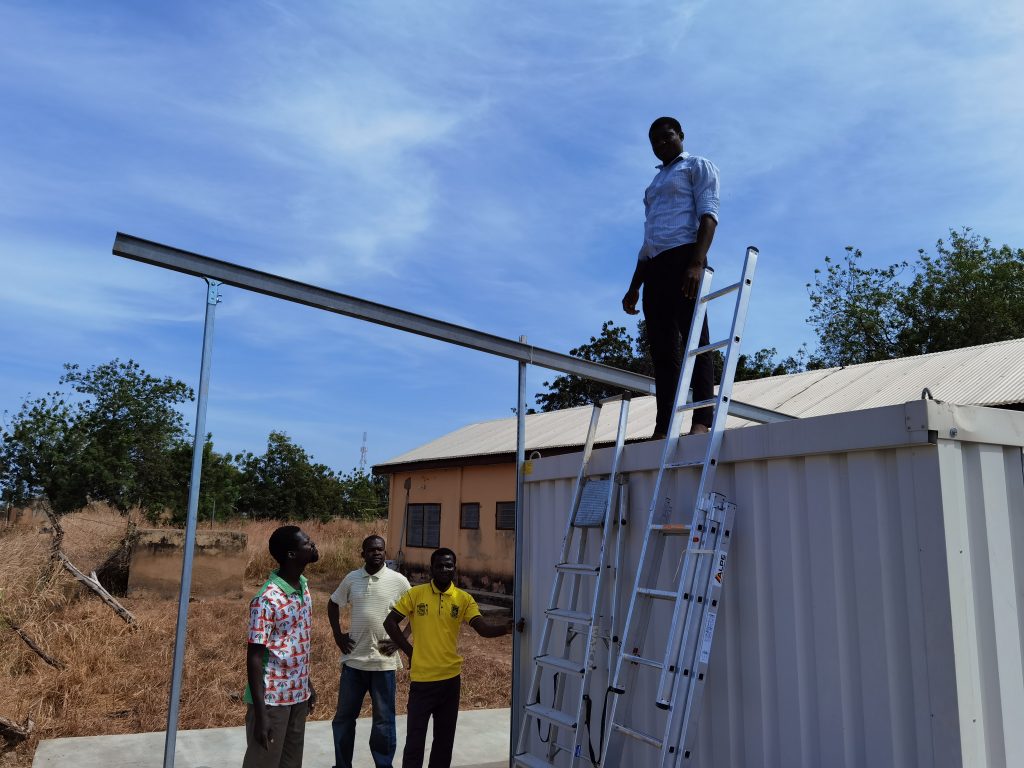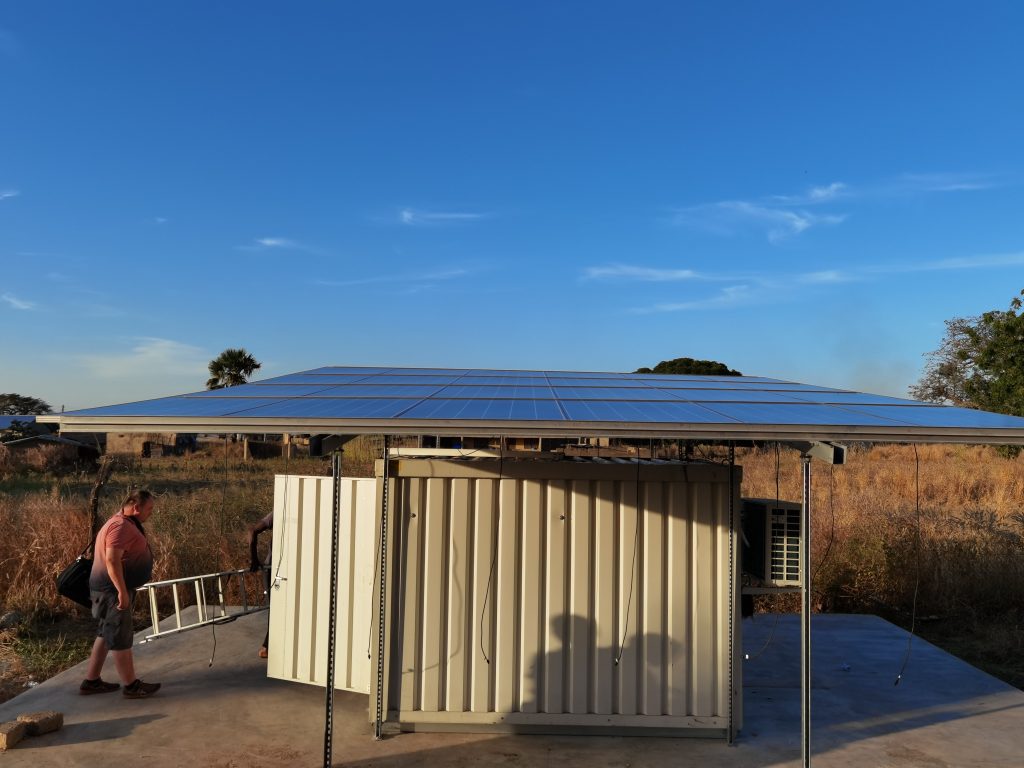In March 2021, a group of researchers from the EnerSHelF project published a paper in the IZNE Working Paper Series: “PV-diesel-hybrid system for a hospital in Ghana – Connection of a PV battery storage model to an existing generator model”. Matthias Bebber, leading author of the paper, summarizes the working paper in this article. You can access the paper on the H-BRS website.
Summary by Matthias Bebber
In our paper, we present a model of a grid-integrated PV-diesel-hybrid system. The model is based on an existing simulation tool from Cologne University of Applied Sciences and was further developed in the context of this paper. By means of real measurement data of PV yield and electricity consumption of a hospital in Ghana – collected in a period from February 2016 to 2017 – the behaviour of the hybrid system in different scenarios is examined. The influence of power outages and seasonal differences in solar radiation on the use of generator and electricity demand from the public power grid for different battery sizes is considered. Special attention is paid to the meteorological and atmospheric characteristics in Ghana, such as the rainy and dry seasons, as well as the harmattan, a seasonal wind in West Africa that carries a lot of dust.












